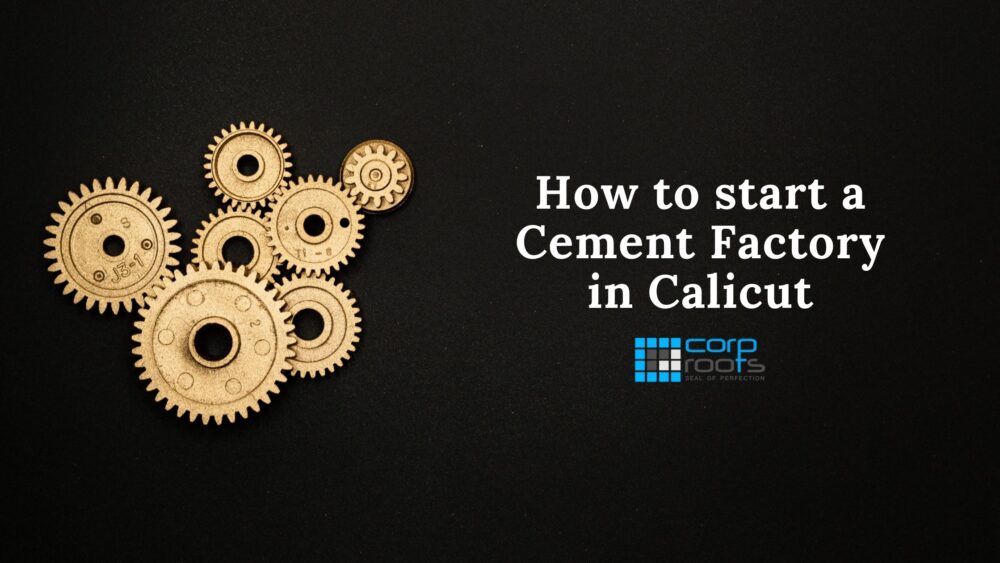How to start a Cement Factory in Calicut: Construction and infrastructure are two of India’s fastest expanding and most sought-after industries. In comparison to other countries, India has a relatively large scope in the cement business. Continue reading to learn about the processes required to start a cement factory:
A step-by-step guide to starting a cement factory:
- Create a proper cement factory plan and analysis.
- Although a cement plant is a booming and profitable industry, it requires careful planning before you begin construction. There are numerous natural and unnatural elements that must be considered while establishing cement production. Natural considerations include raw materials such as limestone, as well as electricity supply, which requires a dependable source such as coal or closeness to the power grid.
- Finances, personnel, real estate, and other unnatural elements are all covered. When making a strategy, keep in mind all of the big and small aspects that are essential to moving forward.
- Create a budget based on your cost-benefit analysis.
- Once you’ve completed your analysis and strategy, you can go to the following phase, which is creating a budget for your factory.
- Make sure your budget includes the cost of land, promise, obtaining raw materials and power supply, salaries, operational expenditures, as well as maintenance and shipping costs for product supply.
- You can also estimate production here so that you can make a profit and adjust your operational costs accordingly.
- Determine the market or location you wish to target.
- One thing you should know about a cement factory is that it serves not only the location in which it is located but also regions that are far away but have clients.
- You must have a robust supply chain in place to ensure that your produce is available at all times. So, choose a place that is not oversaturated and still has a lot of room for a cement factory to thrive. Investigate the area first, and then proceed with the plan.
- Choose a place with a plentiful supply of raw materials.
- The location you choose is also determined by the availability of raw materials. That’s right, no manufacturing can exist without a steady supply of limestone, gypsum, water, and power, to name a few. Check to see if your location has all of these supplies.
- Determine the raw material and energy supply sources.
- Finding a consistent supply of raw materials such as gypsum, limestone, coal, and water is critical here. Not just for a few years; you must secure this supply over the next 20 to 40 years in order for your cement production to be profitable.
- If your plant is located distant from mines, be sure that the cost of transporting raw materials does not significantly increase your cost of production or product cost. There have also been incidences of illicit mining in India, thus it is essential that you investigate before contracting with a mining company.
- Your business needs a high voltage power source for regular production, so locating a location that is a mix of raw materials and power is the ideal idea.
- Get Environment clearance
- Once you’ve decided on these operational aspects, you’ll need licenses and environmental approval to set up the factory. It indicates that your factory is not infringing environmental rules, causing damage to trees and plants in the vicinity, or polluting the surrounding community.
- Waste disposal is also included because it pollutes the environment. Once your idea has been determined to be environmentally and socially feasible, it will be granted the necessary license and environmental clearance.
- Align your project with CSR and sustainability.
- The majority of large cement plants in India have their own corporate social responsibility and sustainability programs. As a significant firm that affects hundreds of lives, you must contribute to society. Carrying out social work in your community, as well as selecting for sustainability, makes your project CSR friendly, which will benefit you in the long run.
- Obtain the necessary labor and begin manufacturing.
- With everything in place and ready to go, you now require labor to begin cement production. You must have specific knowledge to operate factory equipment, even if you are educated and experienced.
- To begin the process, you must hire appropriate engineers and subordinates. Your factory will be useless if it lacks qualified and experienced workers. Your cement mill is now ready to begin operations.
- Proceed with the first batch of production and calculate the daily output. This will provide you with an understanding of the operational costs, manufacturing speed, drawbacks, and other factors.
- Evaluate your competitors
- Now that you’ve established yourself as a full-fledged cement maker, it’s time to research your competitors. What raw materials they utilize, how much it costs to operate and supply them, and so on.
- This will help you understand where you are in relation to the cement industry as a whole, as well as the areas you can improve to make the firm more successful.
Conclusion: It typically takes 6 to 9 months for a cement factory to become operational from the start of a business strategy. So be patient and persevere.
How can Corproots help?
Our experts can help with the entire process of company registration and help you acquire the required licenses in the quickest ways possible. Visit our website for further details.
Extended Read: How To Open A Coffee Shop

